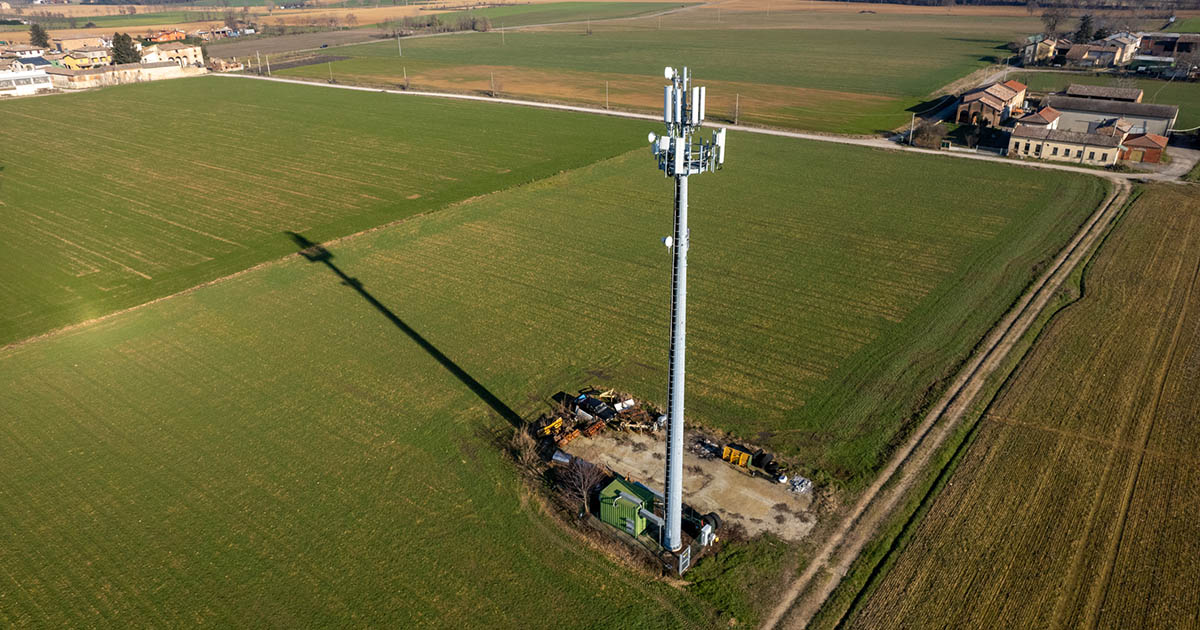
Sept. 9, 2024 – A county zoning ordinance requiring cellphone towers to be at least one-half mile apart is preempted by state law, the Wisconsin Court of Appeals (District IV) has ruled in
Savich v. Columbia County Board of Adjustment, 2024 WI App 43 (July 18, 2024).
In August 2020, Tillman Infrastructure, LLC (Tillman) and AT&T Mobility (AT&T) applied to the Columbia County Planning and Zoning Department for a permit to build a cellphone tower at a specific site on farmland land leased from Chris and Robin McNicol.
A cellphone tower owned by SBA Structures, LLC (SBA) stood less than a half-mile from the site of the proposed tower on the McNicols’ land.
The county’s zoning director issued Tillman a permit to build the proposed tower at the specified site on the McNicols’ land.
Ordinance Preempted
SBA challenged the permit by filing an appeal with the Columbia County Board of Adjustment (BOA). Buddy Savich, who lived next to the site of the proposed tower, joined the appeal.
SBA and Savich argued that the new tower would violate a county ordinance requiring that cellphone towers be at least 2,640 (one-half mile) apart.
The BOA concluded that the county’s tower-separation ordinance was preempted by
Wis. Stat. section 66.0404 and affirmed the decision to grant the permit.
Section 66.0404 bars a municipality from prohibiting the construction of a cellphone tower in a specified location, in effect barring municipalities from classifying cellphone towers as a prohibited zoning use.
 Jeff M. Brown, Willamette Univ. School of Law 1997, was a legal writer for the State Bar of Wisconsin.
Jeff M. Brown, Willamette Univ. School of Law 1997, was a legal writer for the State Bar of Wisconsin.
Tangle of Litigation
SBA filed for declaratory relief and certiorari review in Columbia County Circuit Court.
One day later, Savich filed a complaint in the circuit court. The court consolidated the cases.
The circuit court dismissed SBA’s claim for declaratory relief, and the
Wisconsin Court of Appeals in May 2023 ruled that Savich’s relief was limited to certiorari review.
In June 2022, the circuit court dismissed Savich’s complaint on the grounds that it was filed too late. Savich appealed that ruling.
While Savich’s appeal was pending, in November 2022, the circuit court reversed the BOA’s decision affirming the issuance of the permit.
Tillman, AT&T, and the county parties appealed the circuit court’s decision. The Court of Appeals stayed that appeal pending the resolution of Savich’s appeal.
After the Court of Appeals ruled against Savich in May 2023, Tillman filed a second appeal of the circuit court’s decision.
The Court of Appeals consolidated the two appeals. Savich filed a cross-appeal.
Circuit Court Overlooked Ordinance
Judge Brian Blanchard began his opinion for a three-judge panel by concluding that the circuit court had erred in reversing the BOA.
Tillman argued that the circuit court had ignored a third county ordinance – one that specified that if any ordinance “conflict[s] with the Wisconsin Statutes or federal regulations, said statutes and regulations shall control.”
The panel agreed with that argument. Blanchard pointed out the third ordinance employed the word “shall,” which is mandatory.
“It does not reserve for the county board of supervisors, the courts, or any other person or entity the exclusive role of determining whether there is a conflict, or, if there is, whether the conflicting ordinance is unenforceable,” Judge Blanchard wrote.
SBA and Savich argued that
Ledger v. City of Waupaca Bd. of Appeals, 146 Wis. 2d 256, 430 N.W.2d 370 (1988), required a contrary result. Under
Ledger, a zoning board of appeals generally may not deem an ordinance enacted by a country board as unenforceable.
But Blanchard reasoned that
Ledger was distinguishable.
In concluding that the tower-separation ordinance was preempted by section 66.0404, Judge Blanchard wrote, “the BOA did not act as if it were ‘clothed with’ authority to repeal or disregard a county ordinance.”
“Instead, the BOA was directed by the country preemption ordinance to the extent that it conflicts with the state siting-regulations statute.”
‘Particular Locations’
SBA and Savich argued that section 66.04040 didn’t apply because the county’s tower-separation ordinance did not violate the statute’s restriction on a municipality barring the placement of a cellphone tower “in particular locations within the political subdivision” (section 66.0404(4)(c)).
Tillman argued that each one-half-mile-long radius extending in all directions from a tower created “particular locations” which, under the tower-separation ordinance would be prohibited.
SBA and Savich argued that “particular locations” included only locations identified by either a street address or some other type of property designation or description that identified a spot or area on a county map.
The panel agreed with Tillman.
“New towers are prohibited at any spot in the entire area of each of these circles and this prohibition is unqualified as to each circle,” Blanchard wrote.
“We see no room for an argument that the tower-separation could somehow be interpreted narrowly to avoid a logical conflict with [section 66.04040(4)(c)].”
SBA and Savich, Judge Blanchard wrote, “fail to support their surprising premise that an ordinance could be subject to preemption only when the ordinance uses terms that closely match the terms of the preempting statute.”
Savich’s Cross-Appeal
Savich argued in his cross-appeal that the circuit court should have allowed the parties to engage in discovery during the certiorari review proceedings, so he could pursue his argument that an agent of Tillman had submitted a falsely sworn affidavit in conjunction with permit application.
But Blanchard pointed out that Savich was represented by counsel during the BOA proceedings and had a full opportunity to present their positions about tower.
“It is entirely unclear what additional evidence, gathered at the circuit court stage of the proceedings, could have made a difference to the court’s application of certiorari review standards,” Judge Blanchard wrote.
The panel also concluded the BOA’s decision was supported by substantial evidence.
The Court of Appeals reversed the final orders of the circuit court and remanded the cause and affirmed the non-final orders on cross-appeal.
